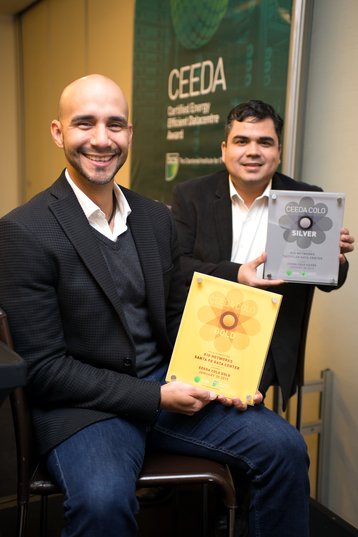If you’re running a green data center, you want to reduce the resources you use, so you’d probably think twice about more paper. So why should green data centers get certified?
That’s a question that has crossed my mind when I cover CEEDA, the Certified Energy Efficient Datacenter Award. Everyone is working on best practices for data center efficiency - so do you really need have a plaque to show off about it?
Obviously, DatacenterDynamics is a big supporter of CEEDA, which emerged five years ago from the BCS industry group in the UK. But let’s keep the question open. Is there really a point in having an award for doing the right thing?
Confidence booster
Well, it’s certainly reassuring to see framed certificates on your doctor’s wall, and you wouldn’t take driving lessons from someone who is not a qualified instructor. Certificates boost your confidence in any supplier.
The other major data center certification scheme, the Uptime Tiers, measures reliability and resilience of a data center, from its design to its implementation - something that most people want to know when they locate key business functions there.
A CEEDA award is meant to reassure you that your choice of provider is operating responsibly towards the environment. Maybe not an essential prerequisite to doing business, but increasingly important.
It’s not just about reassuring customers though. Certificates also help suppliers up their game, by giving them fresh goals to improve towards.
That’s a big part of CEEDA. The award is based on independent assessors measuring a data center against objective criteria. Some sites get classed as Gold, Silver or Bronze, while others aren’t awarded anything. But they all get pointers on how to improve their efficiency, to finally earn CEEDA certification, or else to move further up the scale.
It also enables data center providers to share, compare - and compete - with their peers.
All these factors seem to be working for CEEDA, as it spreads round the world. The first certifications were given in the UK, and then in the English speaking parts of the world - the US and Australia. And now it’s made a big step onto the global stage.
CEEDA expands
The last couple of months have seen the first CEEDA Gold in Asia, awarded to CLP Power in Hong Kong. You might think a utility would have little incentive to save energy, but CLP Power has pushed best practice in its data center, setting up a “high energy efficiency” zone where server temperatures have been deliberately allowed to increase from 22C to 29C, without any adverse effects.
Meanwhile in Latin America, Mexican service provider Kio Networks (above) has been awarded both a Gold and Silver, for two sets of data centers. The provider received a Gold plaque for its in-house Kio 5/6 facility in Sante Fe, while the Silver went to DataPark Tultitlán, Phases 1 and 2, run by its subsidiary redIT.
For both these organisations, being the first in a region to take the CEEDA plunge meant taking a risk, but they clearly thought it was worth it.
Entering a global scheme means ranking your data center alongside others in different regions where business expectations may be different.
And submitting to CEEDA assessment is no guarantee that you will get the result you expect - or even any award at all. The scheme would rapidly lose credibility if it wasn’t independent.
But, if the scheme works, what you get is a universal yardstick, so that your data center can be assessed on a global stage - and global perceptions are all important.


